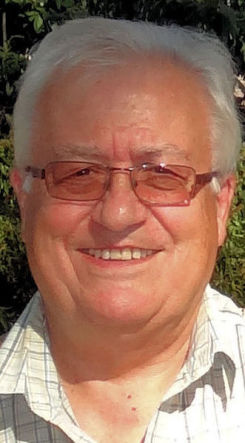Hitler’s Last Plot : The 139 Men, Women, and Children Saved from Imminent Execution in the Final Days of the Third Reich
Jeremy Dronfield,
Ian Sayer

In April 1945, as Germany faced the abyss of destruction, a desperate plan was conceived by leading figures in the SS – with Hitler’s blessing – for a last-ditch defence against the Allies. A fanatical SS guerrilla force would hold out in the mountains of Austria and Italy. The Führer himself added the finishing touch: a plan to round up the Third Reich’s most valuable prisoners. They would be used as hostages. In the last resort, they would be executed in vengeance.
Over 130 VIP prisoners were selected from the special compounds in which they were held at Sachsenhausen, Buchenwald and Dachau concentration camps. These prisoners – the so-called Prominenten† – included former presidents and prime ministers of France, Hungary and Austria, generals and police chiefs from Greece, the Soviet Union and Italy, as well as captured British secret agents, veterans of the Great Escape, German anti-Nazis, including clerics, celebrities, and officers who had aided the July 1944 bomb plot against Hitler, and the wives and children of men who had betrayed the Führer. Altogether they represented seventeen nations and many classes; what they all had in common was that they were hated – and many feared – by the Nazis.
Guarded by a detachment of SS troops (who were to be their executioners if required), the Prominenten who survived the initial round-up were taken on a long journey into the Alps, to the so-called Alpenfestung (Alpine Fortress), a region of impregnable mountain country. So began a tense, deadly drama. Among the prisoners were resourceful, courageous men who couldn’t be held in check easily, and their SS guards grew increasingly volatile, drunk and trigger-happy as defeat loomed. The leaders of the Prominenten risked themselves to keep their fellow hostages alive and fed, while the more aggressive plotted to contact partisans and the Allied armies advancing through northern Italy. It was a situation that could explode at any moment, and finally developed into an armed stand-off between Wehrmacht forces and the SS, with the hostages in the middle.
While some of the hostages conducted dangerous negotiations with local Wehrmacht generals, one of them – a renowned Great Escaper – made a desperate trek through enemy territory to American lines. His arrival there triggered a frantic rescue bid in which an American armoured task force raced ahead of the Allied advance in an attempt to save the Prominenten before the axe fell.
† VIPs
Book Details:
- Author: Jeremy Dronfield, , Ian Sayer
- Published Year: 2019
-
Rights Sold
- US: Perseus
- Czech Republic: Albatros
- China: Beijing Standway Books Co
- Estonia: Uhinenud
- Hungary: Europa Kiado
- Poland: Amber
- Russia: Azbooka-Atticus Publishing Group.

Jeremy Dronfield,
Jeremy Dronfield is a versatile, multi-faceted writer with four novels to his name.
He came to writing via a circuitous route. His first serious stopover in life was as an archaeologist. After a few years in rescue excavation, he did his doctoral research at Cambridge University, on the subject of art and religion in prehistoric Ireland. His thesis was published as a series of papers in international journals including Antiquity and Current Anthropology.
While trying to get an academic career in archaeology off the ground, he began dabbling in writing fiction – a pursuit he’d ...
More about Jeremy Dronfield,

Ian Sayer
Ian Sayer was born in Norwich in 1945. He is an entrepreneur and a military historian specialising in World War II. His investigation into what the Guinness Book of Records termed ‘The World’s Greatest Robbery’ led to the 1984 publication of his international bestseller Nazi Gold (still selling well after 33 years), and in 1998 he had the rare honour of being photographed in the vaults of the Bank of England holding two bars of stolen Nazi Gold which he had tracked down on behalf of the US government.
In 1988 Ian was responsible for locating the most senior surviving Nazi...
More about Ian Sayer
Book Reviews
-
"This gripping account of one of the important but lesser-known aspects of the last days of the Second World War is packed with brand new information. Ian Sayer is a fine World War Two historian and the owner of the greatest private archive on the subject in Britain and has a long and enviable track record of discovering great historical scoops. Written with pace and verve, yet always true to the facts, this extraordinary story would make an amazing feature film."
Andrew Roberts -
"A footnote to history that will interest students of World War II."
Kirkus -
"For any World War II buff, Hitler’s Last Plot is a must-read. But anyone who enjoys a good old-fashioned adventure tale will love it, too. "
Washington Independent Review of Books -
"Using both primary and secondary sources, authors Ian Sayer and Jeremy Dronfield painstakingly detail their odyssey in a clear, highly accessible style that reads much like a detective story. .. an impressive piece of detective work that effectively brings its subject matter to life….Hitler’s Last Plot is a worthy contribution to the burgeoning literature on resistance to Hitler and the Third Reich. It also provides significant insight into the mentality of the Nazi leadership, especially as it became more and more desperate with the approach of the Allies on all fronts. Detailed, readable, and with a clear narrative that is interesting as well as compelling, the book will appeal to students of resistance movements, the Third Reich, and the conduct of the Second World War in Europe. "
Military Review -
"suspenseful and fearful ."
New York Journal of Books